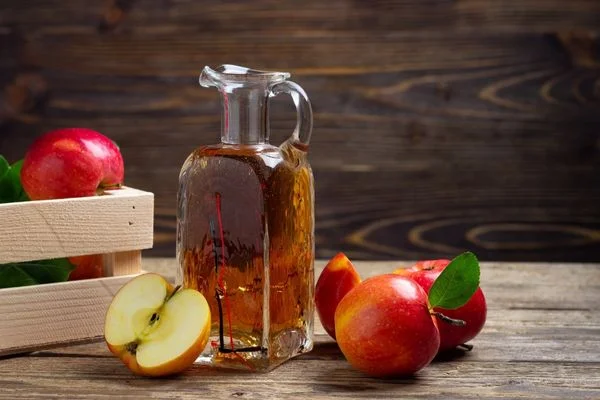Baking is a science and requires precision and attention to detail. Every ingredient plays a crucial role in achieving the perfect texture, flavor, and appearance of the baked goods. While we often use apple cider vinegar in cooking, not many people are aware of its potential benefits in baking.
In this article, we’ll explore the question, “What Does Apple Cider Vinegar Do in Baking?” and learn about its many uses and benefits.
What Does Apple Cider Vinegar Do in Baking? Apple cider vinegar is a versatile ingredient that can be used in various ways in baking. Here are some ways that it can affect your baked goods:

- Acts as a leavening agent: Apple cider vinegar contains acetic acid, which reacts with baking soda to create carbon dioxide bubbles. These bubbles help the baked goods rise, resulting in a lighter and fluffier texture.
- Adds flavor: Apple cider vinegar has a distinct, tangy flavor that can enhance the taste of your baked goods. It works especially well in recipes that call for acidic ingredients such as lemon juice or buttermilk.
- Helps with preservation: Apple cider vinegar has antimicrobial properties, which can help prolong the shelf life of baked goods. It can also prevent the growth of mold and bacteria, which is especially important in humid environments.
- Balances pH levels: In baking, pH levels play a critical role in achieving the desired texture and appearance. Apple cider vinegar can help balance the pH levels of your baked goods, ensuring that they turn out perfectly.
How to Use Apple Cider Vinegar in Baking? Now that we know the benefits of apple cider vinegar in baking, let’s look at how to use it:
- As a substitute for buttermilk: If you don’t have buttermilk on hand, you can use a mixture of milk and apple cider vinegar instead. For every cup of milk, add one tablespoon of apple cider vinegar, and let it sit for a few minutes until it curdles.
- In recipes that call for acidic ingredients: If a recipe calls for acidic ingredients such as lemon juice or sour cream, you can substitute it with apple cider vinegar. Use one tablespoon of apple cider vinegar for every one cup of the acidic ingredient.
- As a leavening agent: If you’re making baked goods that require a leavening agent, such as cakes or bread, you can add a teaspoon of apple cider vinegar to the recipe. This will react with the baking soda, helping the baked goods rise.
FAQs
While you can use other types of vinegar in baking, apple cider vinegar is the best option. Its distinct flavor and pH levels make it the most suitable choice.
Yes, using too much apple cider vinegar can affect the taste and texture of your baked goods. It’s essential to follow the recipe’s instructions and not exceed the recommended amount.
Yes, apple cider vinegar is gluten-free.
Conclusion
In conclusion, apple cider vinegar is a versatile ingredient that can significantly improve your baking skills. Its many benefits, such as acting as a leavening agent, adding flavor, helping with preservation, and balancing pH levels, make it an essential ingredient to have in your pantry. By using it in your baked goods, you can take your baking skills to the next level and achieve the perfect texture.
